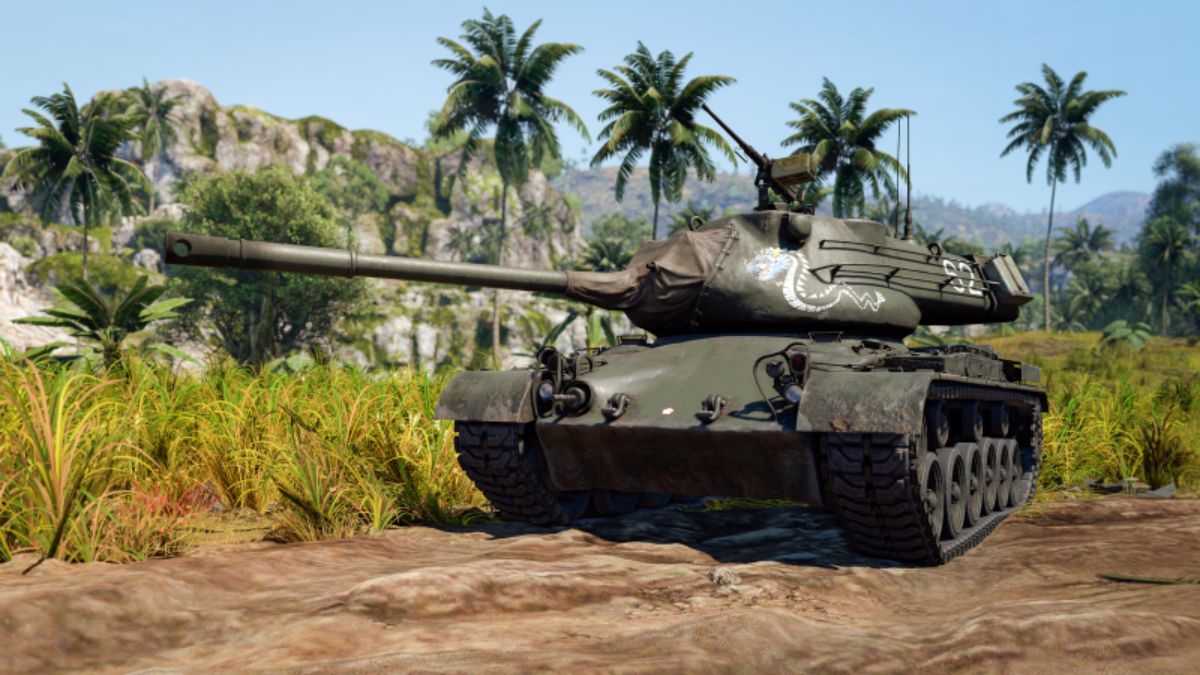
The second American tank to bear the name of General George S. Patton, a significant player in World War II and an early proponent of tank warfare, is the M47 Patton, an improved turret-equipped version of the M46 Patton. The M47 became the main tank for the U.S. Army and Marine Corps, replacing the M26 Pershing and M46 Patton medium tanks. Notably, the M47 never saw action during U.S. service, despite being widely adopted by NATO and SEATO, the United States’ Cold War allies. In contrast to the M48 and M60, which were completely new tank designs, the M47 maintained its unique status. Although there are still M47 Patton tanks in use abroad, this one is unique as it was the only American tank with a machine gun placed on the hull.
Specifications:
This military vehicle weighs 48.6 short tonnes (44.1 t) when it is combat-ready, and its dimensions are 27 feet 11 inches long, 11 feet 6.25 inches wide, and 11 feet tall. The crew of five, consisting of a commander, gunner, loader, driver, and assistant driver, can fit within. The armour composition consists of an 8-inch Line of Sight (LoS) and a 4-inch upper glacis at a 60° angle, and the turret front has a 4-inch thickness at a 40° angle and a 5.22-inch LoS. Fitted with a roof-mounted secondary armament, the vehicle is armed with a 90mm gun M36 that can hold 71 rounds.50 cal M2 machine gun and two .30 cal M1919A4 machine guns, one on a flexible mount at the right front of the hull and the other coaxial with the main cannon. This military vehicle is propelled by an air-cooled, gasoline-powered Continental AV-1790-5B V12 engine that produces 810 horsepower (600 kW), or 17.6 horsepower (13.1 kW) per tonne. An Allison CD-850-4 with two forward ranges and one reverse is part of the gearbox system. It has a 233 US gallon fuel capacity (880 L; 194 imp gallons) and is suspended with a torsion bar system. The vehicle has a 100-mile (160-kilometer) operational range and a top speed of 30 mph (48 km/h).
Variants:
The M47 series of tanks has undergone several enhancements and alterations over time, which is indicative of a complex developmental history. First deployed as a test model, the M46E1 had the M46 hull, T42 turret, and M36 90 mm gun. This single prototype, which was identifiable by its lengthy form that held a radio, ventilator, and stereoscopic rangefinder, served as the model for later modifications. The M46 hull underwent major modifications for the first production version, the M47, which included a reworked glacis and fewer track return rollers. The M47, of which 8,576 were produced, turned into a crucial version of the series. A limited run of only 20 M47E1 tanks were produced, and they were praised in comparative assessments for incorporating the British Centurion tank’s sophisticated fire control system.
Operations:
The adaptable M47 Patton tank has been used extensively in a number of conflicts between the late 1950s and the early 1990s. Notably, French forces used a squadron of M47s against Egypt during the Suez Crisis in 1956, demonstrating their involvement in international battles. Later on, M47s were used by Pakistan in the Indo-Pakistani Wars of 1965 and 1971, and by Jordan against Israel in the 1967 Six-Day War. During its invasion of Cyprus in 1974, the Turkish Army used M47s, and one functioning tank that was taken prisoner by the Cyprus National Guard was used until 1993. The M47 was also used in the 1980–1988 Iran–Iraq War, where Iranian M47s had difficulties from better Iraqi tanks. In particular, M47s were used by the Turkish Army in counterinsurgency operations against PKK guerrillas in Turkey and Iraq during the 1980s and early 1990s. Despite their inferior performance compared to Soviet-designed T-55s, Croatia employed M47s throughout the Croatian War of Independence. M47s were eventually withdrawn after the war, but they were still used as live targets in military drills. The tank’s combat experience highlights its ability to operate in a variety of environments and its engagement in multiple fronts of conflict.
